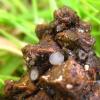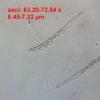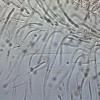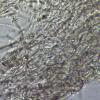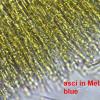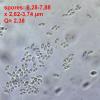
15-06-2016 06:41
François BartholomeeusenHello forum members,On cones of Pinus sylvestris I

13-06-2016 23:46
A group of these were in the ruts created by recen

14-06-2016 07:22
 Andreas Gminder
Andreas Gminder
Hello, yesterday I found a small stipitate ascomy

13-06-2016 12:23
en madera de fagusTengo dudas con ella, a ver q

12-06-2016 14:57
Thorben HülsewigHi there,yesterday i found a Marcelleina sp. along
is this Cudoniella rubicunda...or not?
François Bartholomeeusen,
15-06-2016 06:41
On cones of Pinus sylvestris I found fruiting bodies with a diameter less than 3 mm. They are cup-, disc-to cushion-shaped, moist: translucent-white ; dry: pink-to purple-colored.
It was not easy to make a slice because of the gelatinous texture.
The spores are hyaline with an oil drop to each pole.
Can this be Cudoniella rubicunda.
Thanks in advance and many greetings,
François Bartholomeeusen
Nicolas VAN VOOREN,
15-06-2016 08:29

Re : is this Cudoniella rubicunda...or not?
Oui, ça me paraît correct comme détermination, mais le genre à appliquer serait plutôt Ombrophila.
François Bartholomeeusen,
15-06-2016 10:18
Re : is this Cudoniella rubicunda...or not?
Merci Nicolas!
« Mycobank » mentionne Cudoniella rubicunda (Rehm) Dennis et Ombrophila rubicunda F. von Höhnel, est-ce-qu'il agit du même asco ?
Salutations,
François
« Mycobank » mentionne Cudoniella rubicunda (Rehm) Dennis et Ombrophila rubicunda F. von Höhnel, est-ce-qu'il agit du même asco ?
Salutations,
François

